Form linking
You can use one of the following approaches to link a form to a user task or a none start event.
By linking a Camunda Form to a start event, process instances can be started with the form's input via a public form (SaaS only) or directly in Tasklist.
Using the link button
- Select a user task or none start event from the canvas and a link button will appear at the bottom right.
- Click on the button and choose any form from the same project.
- Click the Link button to complete the linking process. In the properties panel on the right side of the screen, the value Camunda Form (linked) is chosen for the Type property, and the form ID of the form you chose to link is automatically copied to the Form ID section.
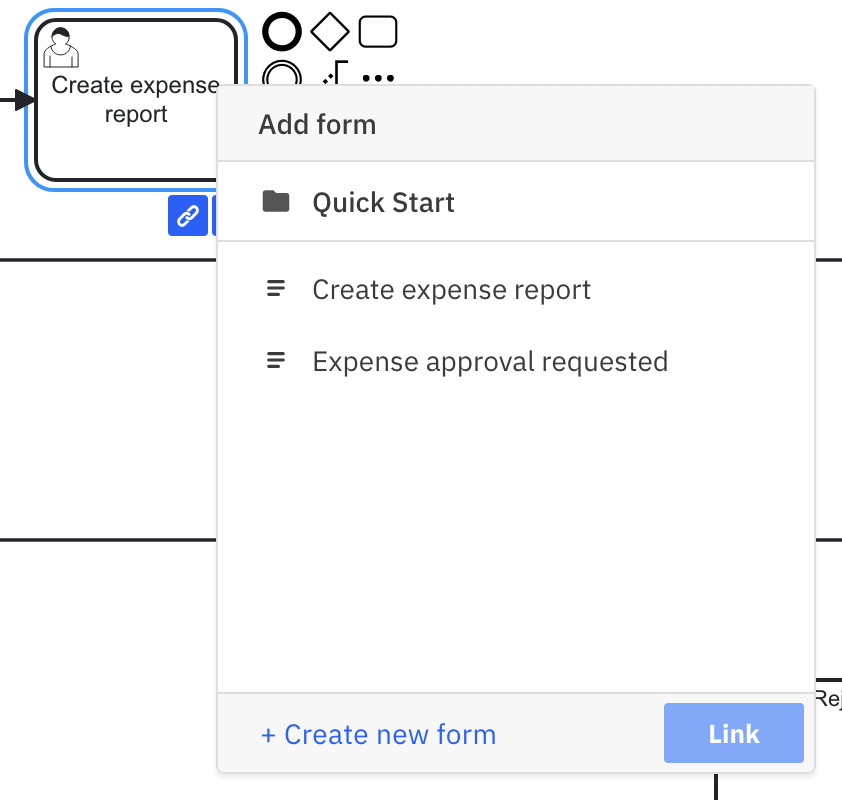
For user tasks/start events that are already linked, clicking on the link button opens a dialog which shows a preview of the form the user task is linked to. It is possible to navigate to the linked form by clicking on it, or you can use the Unlink button to remove the link.
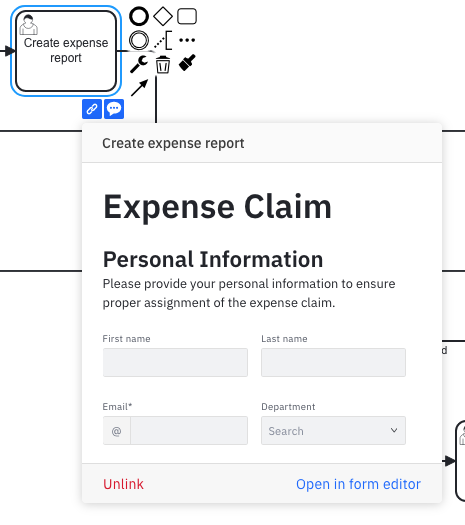
Using the properties panel
Using the properties panel, you can connect a form to a user task/start event via the Form section by choosing between different types.
Camunda Form (linked)
Choosing Camunda Form (linked) as the type and entering the form ID directly produces the same result as using the link button on the modeling canvas.
- Binding: You can also select a different binding for the called decision. See choosing the resource binding type.
- Version tag: If you select version tag for the binding, you must enter the actual version tag to use.
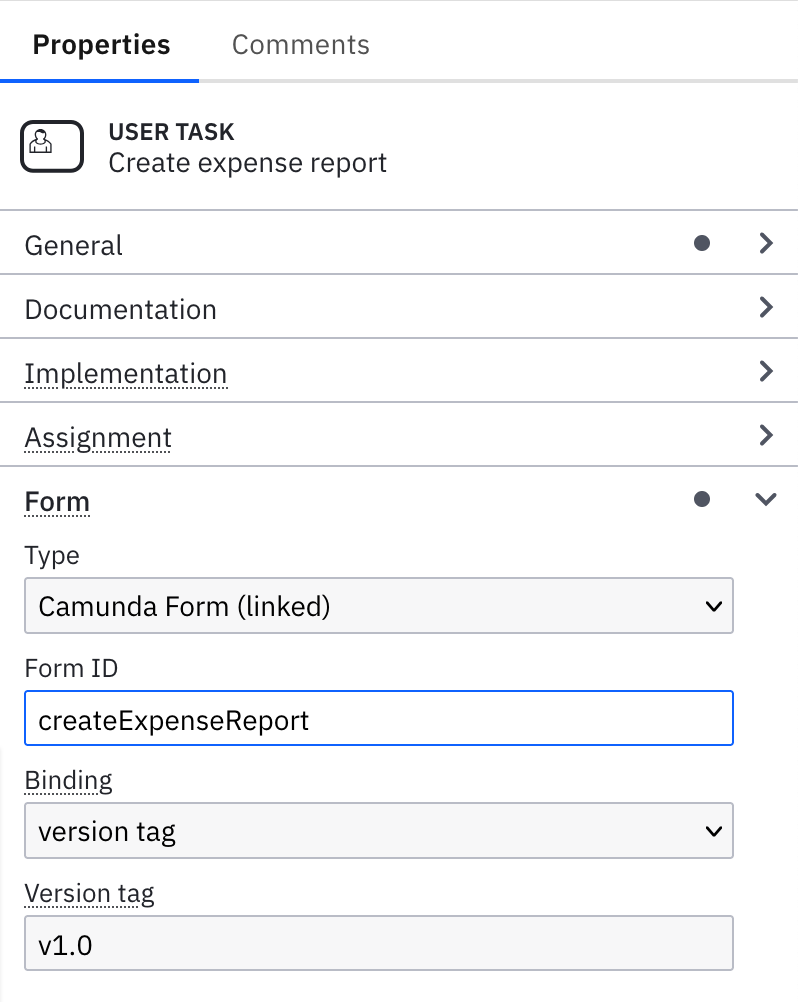
Using a linked form is the recommended approach as it allows you to benefit from the form automatically being deployed with the diagram. This means when deploying a BPMN diagram, Web Modeler will always deploy the latest version of all linked forms along with the diagram, so you do not have to manually re-link forms or copy & paste JSON configuration when making changes.
When deploying a diagram, Web Modeler will always deploy the latest version of all linked forms along with the diagram. This means that if you reference the same Form ID within multiple BPMN diagrams, all diagrams will always use the latest version of the form regardless of which version was used when the diagram was initially deployed (unless you change the binding type for a linked form).
To deploy to a Camunda 8 cluster with a version lower than 8.4, linked forms will be automatically embedded into the BPMN diagram's XML to guarantee backwards compatibility. This conversion will only be applied to the XML deployed to the cluster; the diagram in Web Modeler will not be changed.
Known issues with linked forms
Wrong form used for user task - zeebe/#16311
Some users have encountered an issue that was present in Camunda 8.4.0, 8.4.1, and 8.4.2 where linked forms did not correspond correctly to their tasks, leading to discrepancies in workflow execution. We have identified and rectified this issue in the Camunda 8.4.3 release, ensuring that tasks are now generated with the correct forms, as intended in your workflow design.
How to fix the issue - Regenerate tasks with correct forms
To correct any instances affected by this issue, we recommend the following steps after updating to Camunda 8.4.3:
- Navigate to Operate to access your workflow instances impacted by the linked form issue.
- Select the instances where tasks were generated with the incorrect forms by clicking on their process instance key, and you will be navigated to the process instance view.
- Move the instance to the same task, effectively restarting the task. To do this, click the wrench icon in the top right corner:
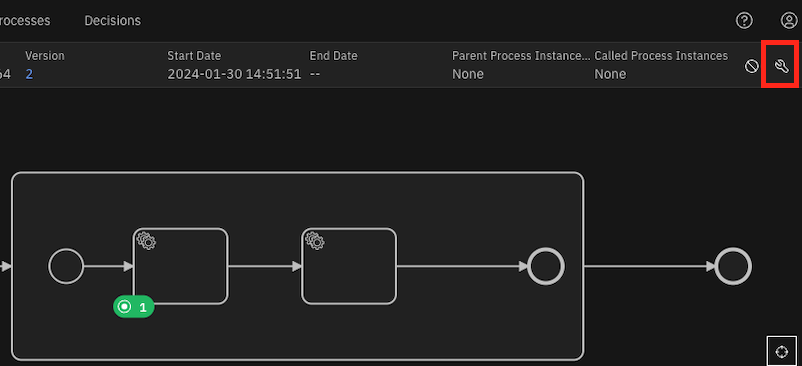
- After this, a popup explaining how process modification works will appear. Click Continue, select the active task, and click Cancel instance.
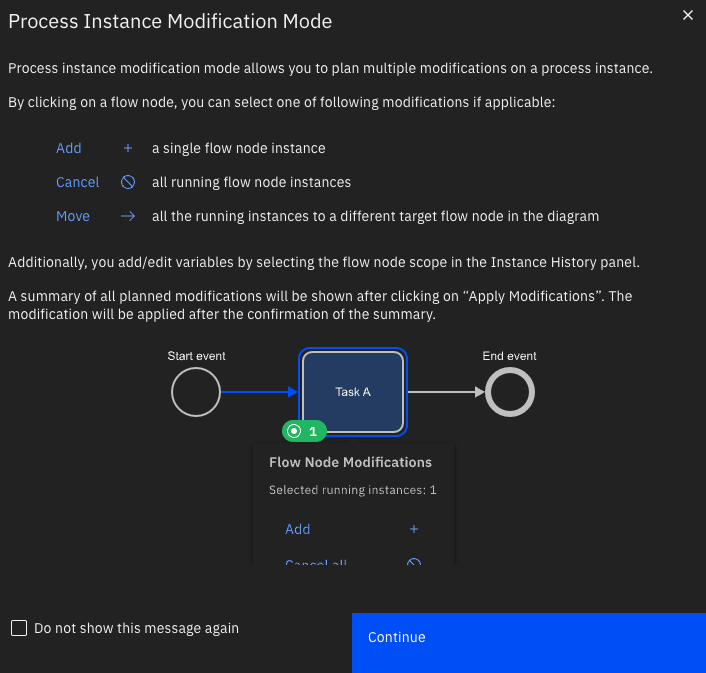
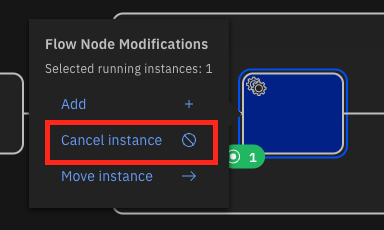
- Click Add to add a flow node.
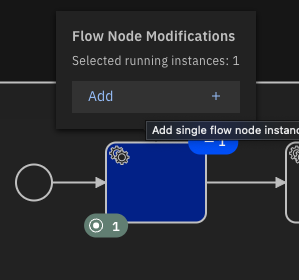
- Click Apply notification to check if the process is correct.
- Click Apply; a new task should be generated with the correct form.
Camunda Form (embedded)
Embedded forms are only supported for job worker-based user tasks. They are not available for the Camunda user task implementation type.
When choosing Camunda Form (embedded) as type you have the option to directly paste the form's JSON schema into the Form JSON configuration field of the properties panel. The form will be embedded directly into the BPMN diagram's XML representation.
This approach is not recommended anymore as it makes it harder to maintain the form and the diagram separately. You will have to manually copy and paste the form's JSON schema into the properties panel every time you make a change to the form instead of benefiting from the advantages of linked forms described above.
Use this option to ensure that the embedded form does not change when you or someone else makes a change to the source form.
Custom form key
Choose Custom form key (only available for user tasks) to create a custom reference to an external form, application, or web page, that you can consume in your custom applications. Read more in the user task forms reference.